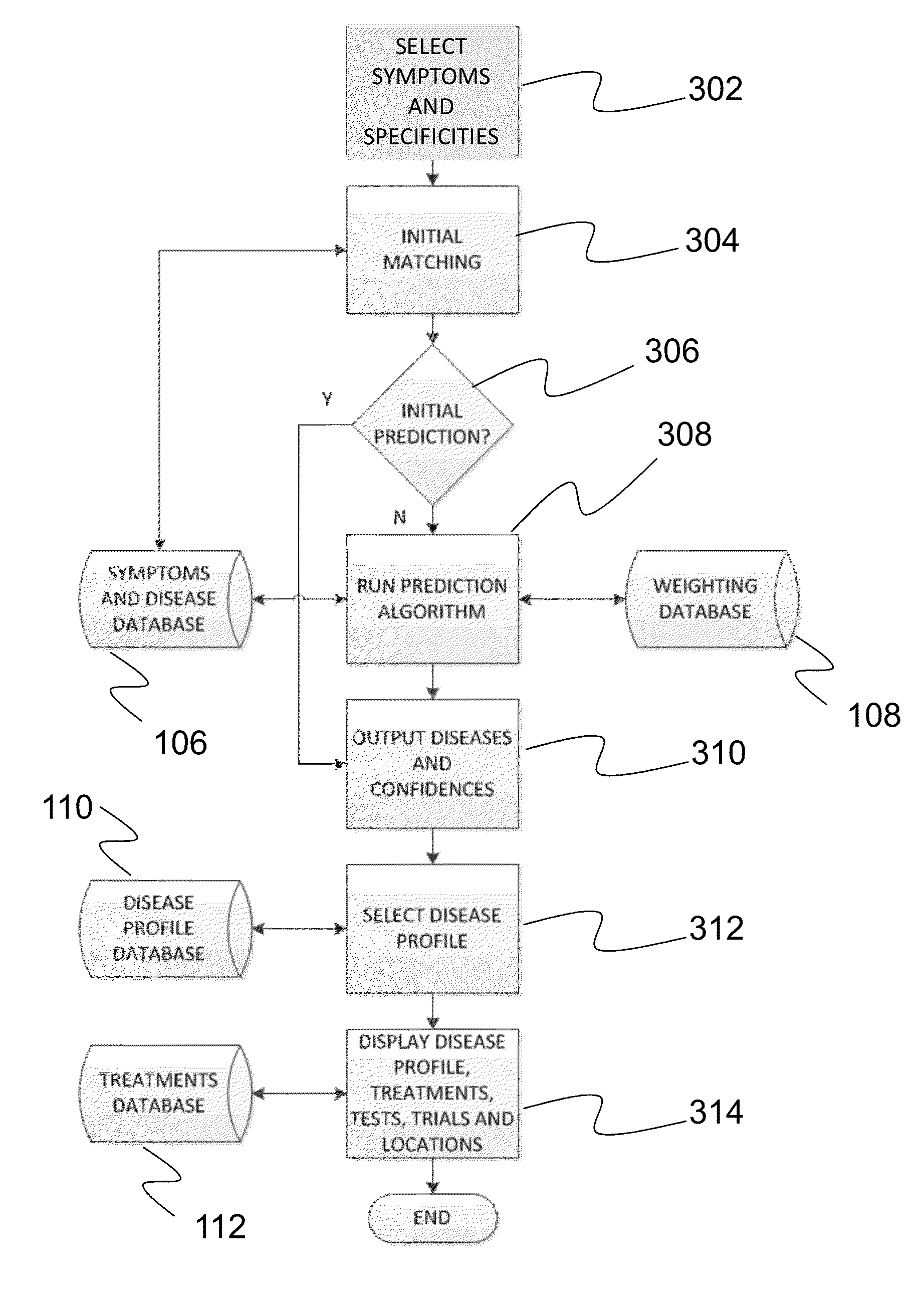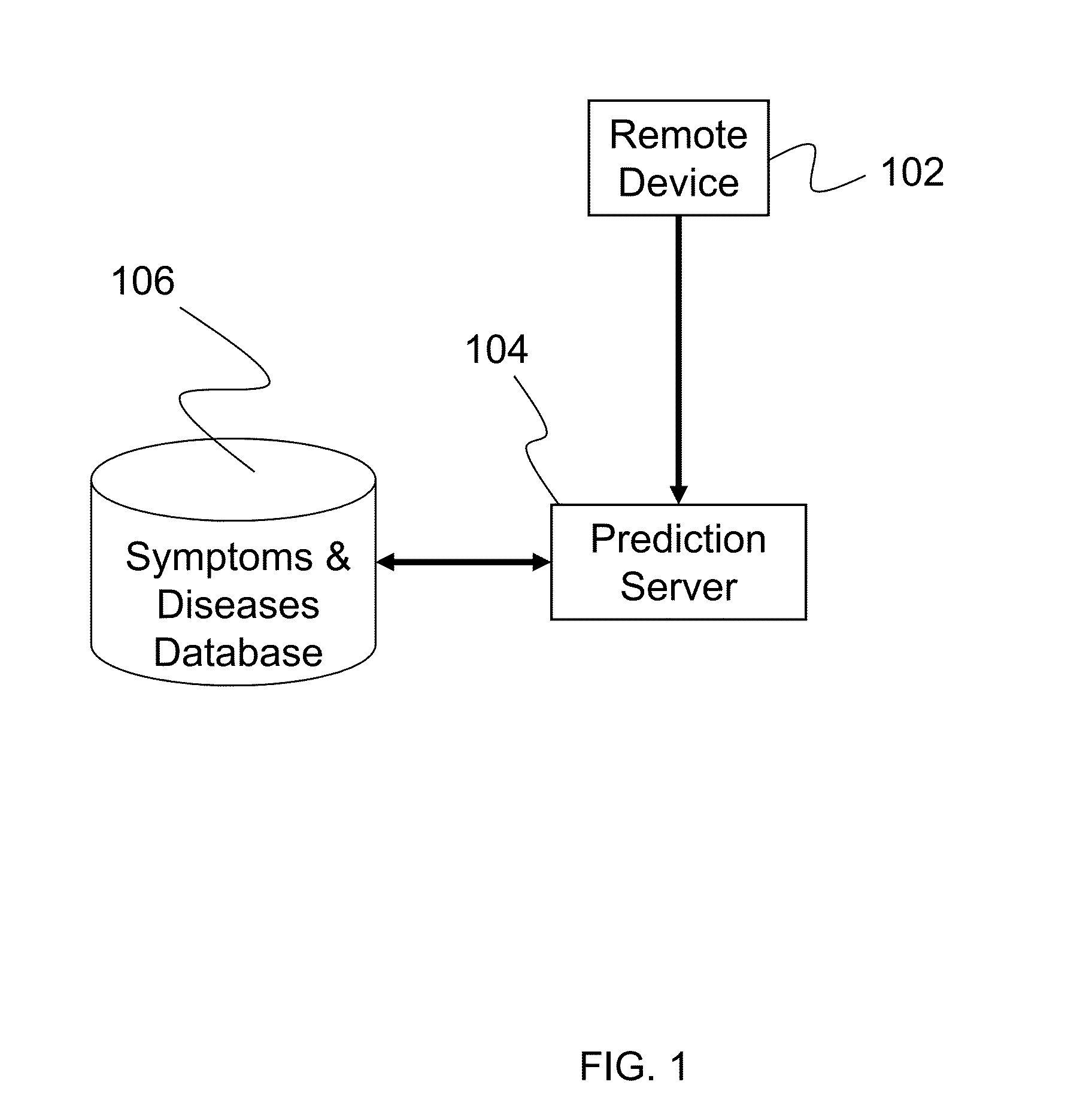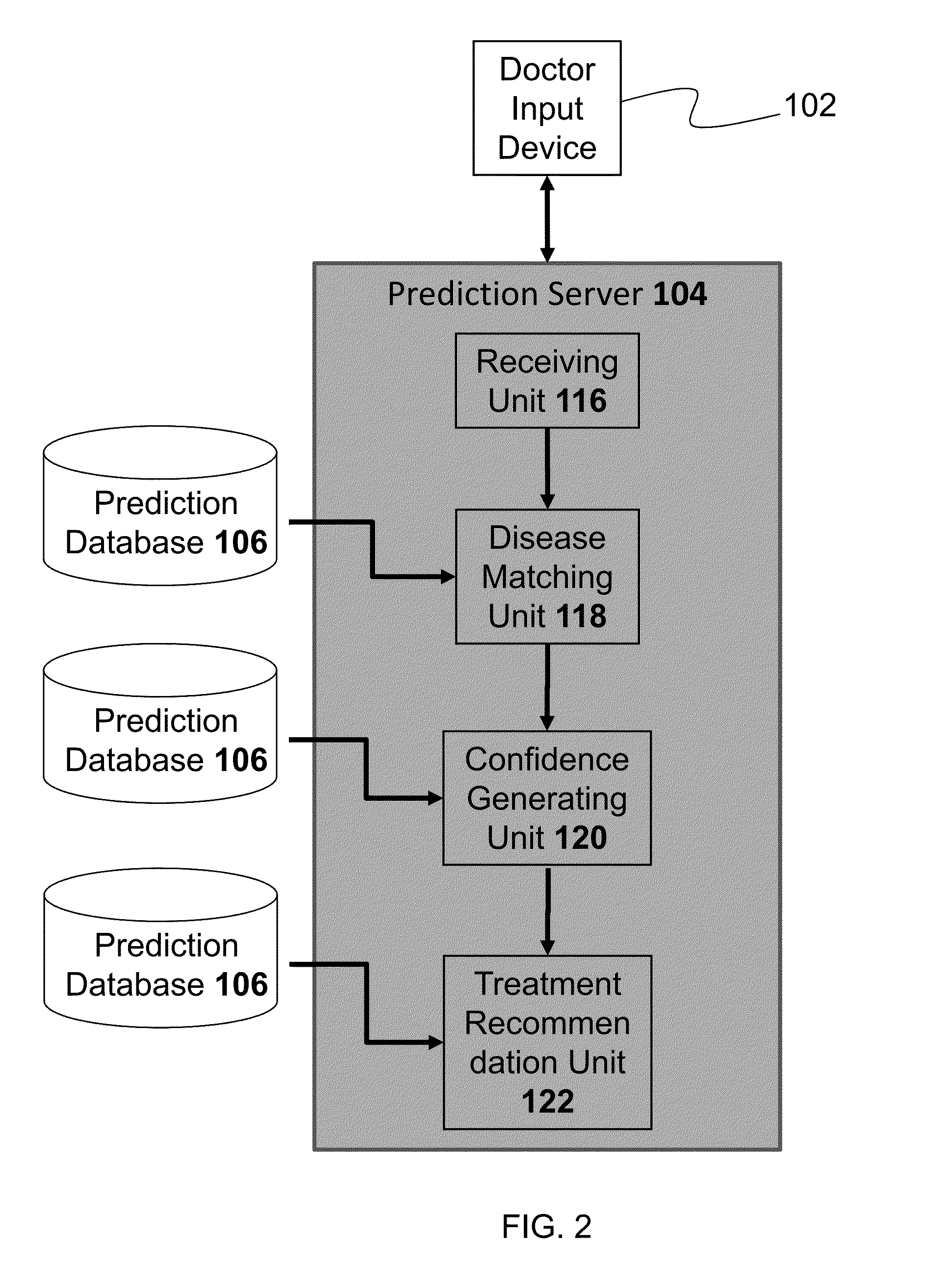Systems and methods for rare disease prediction and treatment
a rare disease and system technology, applied in the field of health-related predictive analytics, can solve the problems of chronic, life-threatening, debilitating, difficult to diagnose rare diseases,
- Summary
- Abstract
- Description
- Claims
- Application Information
AI Technical Summary
Benefits of technology
Problems solved by technology
Method used
Image
Examples
Embodiment Construction
[0022]The systems and methods described herein provide a portal for predictive analytics relating to comprehensive lists of symptoms weighted for each disease in order to determine the likelihood that a patient may suffer from a rare disease. The embodiments described herein enable physicians to query multiple symptoms that the patient presents with and receive a list of candidate diseases and confidences associated with each candidate disease. The symptoms of these rare diseases are ranked and / or weighted according to its specificity with a rare disease. The portal will process the selected symptoms and their disease-specific weights with a customized algorithm to generate a confidence for each candidate disease. The confidences are then displayed to the physician along with disease profile information including confirmatory diagnostic tests, specialized facilities and possible treatments.
[0023]The embodiments do not provide a diagnostic indication, but can be regarded a “hypotheti...
PUM
 Login to View More
Login to View More Abstract
Description
Claims
Application Information
 Login to View More
Login to View More - R&D
- Intellectual Property
- Life Sciences
- Materials
- Tech Scout
- Unparalleled Data Quality
- Higher Quality Content
- 60% Fewer Hallucinations
Browse by: Latest US Patents, China's latest patents, Technical Efficacy Thesaurus, Application Domain, Technology Topic, Popular Technical Reports.
© 2025 PatSnap. All rights reserved.Legal|Privacy policy|Modern Slavery Act Transparency Statement|Sitemap|About US| Contact US: help@patsnap.com



